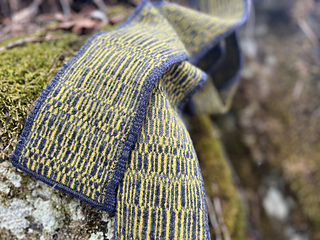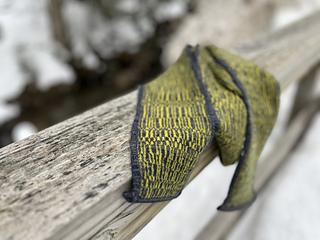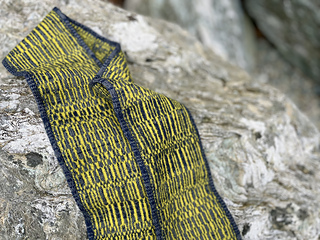patterns >  Wöldten and 1 more...
Wöldten and 1 more...
> Witton








Witton
DESCRIPTION:
A study in minimalist elegance, Witton brings together geometric precision and knitting versatility in one timeless design. This charted scarf pattern offers knitters the freedom to interpret it in their own way—whether as double-knit for maximum warmth and reversibility, stranded colorwork with conveniently short floats (no more than three stitches wide), or a textured knit-purl pattern for a single-color statement piece.
Named for the Old English “wood farm” or “settlement” (from wudu, meaning wood or timber, and tūn, an enclosure or farmstead), Witton evokes the structured beauty of cultivated woodland and the quiet order of rural landscapes. Like the English place-names that inspired it, this design balances natural simplicity with purposeful construction.
The pattern’s adaptability makes it ideal for any yarn weight or fiber—your choice of materials and technique will shape the scarf’s final character. A test swatch is recommended to determine your ideal needle size and gauge. The sample shown was knit as a narrow scarf, but the design scales beautifully to your preferred dimensions.
Whether you’re drawn to the meditative rhythm of colorwork, the cozy depth of double-knitting, or the sculptural quality of textured stitches, Witton offers a canvas for your creativity.
TECHNIQUES:
Techniques used in this design are stranded knitting and slipped stitches to create an i-cord edge border. Grafting is briefly used to finish the final stitches at the end.
CHART:
This pattern comes with written instruction along with a beautiful vector charts.
SIZE:
Width: 11 cm (4 1/4”)
Length: 178 cm (70”)
YARN + YARDAGE:
MALABRIGO SILKPACA
70% Baby Alpaca, 30% Mulberry Silk
Weight: Lace; 50g/420yds
This pattern uses a main and contrast yarn. Suggested pairings as follows: Malabrigo Silkpaca Lace “Frank Ochre” SA035 with “VAA” (Verde Azul Amarillo) SA051, “Renaissance” SA691, or “Zarzamora” SA863.
The sample shown in the photographs was knit using a stockinette stitch for the side and bottom edging, however this has a tendency to roll, so it is suggested in the pattern that this be worked in a moss stitch, although a garter stitch edge would work just as well.
The chart included shows the entire repeat and then is broken down into 15 separate sections for ease of knitting.
This pattern is recommended for the experienced knitter, but written for the adventurous novice.
10206 projects
stashed
14284 times
- First published: June 2022
- Page created: July 1, 2022
- Last updated: September 30, 2025 …
- visits in the last 24 hours
- visitors right now





